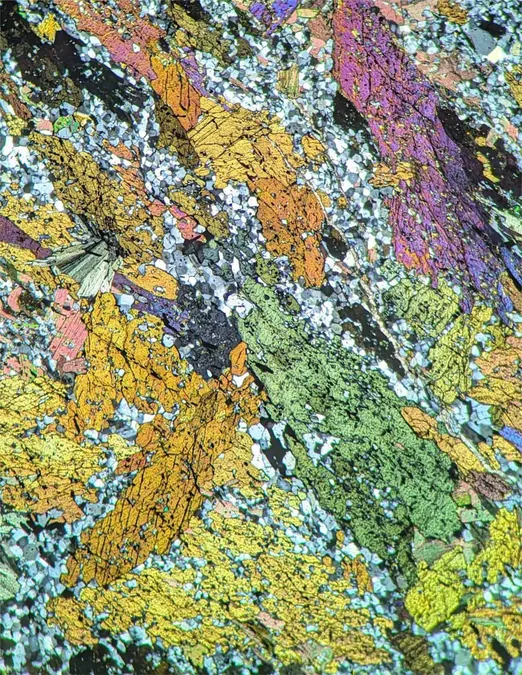
Discovering Earth's Ancient Secrets: Researchers Unveil the Hidden Role of Metamorphic Rocks in Climate History!
2024-11-04
Author: Arjun
Imagine if Earth's history were compressed into just one year – humans wouldn’t show up until the very last moments before midnight on December 31st! During the Proterozoic Eon, from 2.5 billion to 543 million years ago, our planet was a different place. The sun shone dimmer than it does today, necessitating a stronger greenhouse effect to maintain the cozy temperatures required for life’s earliest organisms.
A groundbreaking study by Emily Stewart, Assistant Professor of Geology at Florida State University, is shaking up previous beliefs about how ancient Earth maintained its warmth. This pivotal research postulates that greenhouse gases, specifically carbon dioxide released from metamorphic rocks, played a crucial role in supporting early life rather than volcanic activity, which has long been considered the primary source of carbon emissions.
In a collaborative paper titled “Enhanced metamorphic CO2 release on the Proterozoic Earth,” published in September in the esteemed Proceedings of the National Academy of Sciences, Stewart and coauthor Donald Penman from Utah State University unveil evidence that metamorphic processes were key contributors to Earth's ancient carbon cycles.
"By exploring the ancient geologic processes that influenced temperature, we gain insights into climate sensitivity, enhancing our ability to predict how Earth's geological mechanisms might respond to current human-induced climate change," Stewart asserts. “This understanding can also revolutionize how we manage carbon regulations today, addressing modern challenges in climate science.”
In the context of our planet's carbon cycle, carbon dioxide acts like an insulating blanket that wraps the Earth. During the Proterozoic Eon, as the sun's light diminished, the atmospheric carbon gradually increased over millions of years to stave off a climate crisis for the planet’s nascent life forms – including primitive organisms resembling jellyfish and worms.
Prior to this research, scientists predominantly attributed atmospheric carbon to volcanic activity dating back 3.8 billion years. However, Stewart’s team utilized computer simulations and mathematical modeling to uncover that metamorphic rocks also played a significant role in the greenhouse effect during the Proterozoic. When high temperature and pressure conditions act upon carbonate-silicate rocks, these metamorphic processes release significant amounts of carbon dioxide, amplifying global warmth.
Their findings indicated that carbon dioxide levels during the Proterozoic were four times greater than pre-Industrial Revolution geological off-gassing rates. "When we refer to 'modern' geology, it typically spans the last 500 million years post-Cambrian explosion. Our comparisons reveal how today's human-driven carbon emissions far outpace these natural geological cycles," explains Stewart.
However, the carbon cycle is complex, interlinking the atmosphere, oceans, terrestrial plants and animals, rocks, and decomposed organisms. While oceans absorb substantial atmospheric carbon leading to acidification from climate change, plants utilize sunlight to store carbon, which is then cycled back into the atmosphere when animals consume these plants.
This research emphasizes that rocks, often perceived as inert and unchanging, have historically influenced carbon cycling more than previously considered. "This study highlights that the rate of carbon dioxide off-gassing from rocks is variable and interconnected with other carbon cycle elements, potentially driving atmospheric changes in ways we hadn't fully realized before," Penman stated.
To further validate their findings and explore the role of metamorphic rocks in ancient warming, Stewart, alongside doctoral students Kanwa Sengupta and Sayantan Saha, plans to conduct extensive fieldwork in the Central Metasedimentary Belt in Ontario, Canada.
Stewart concluded with a thought that captures the essence of geological exploration: "Geology is our portal to the past. While we can peer back through archaeology for about 300,000 years, our planet’s story spans 4.6 billion years, and the rock record is the key to unlocking it."
As scientists dive deeper into our planet's ancient narratives, the implications of this research extend far beyond the realms of geology, offering crucial insights into combating current climate challenges and revealing how interconnected our world's systems truly are. Don’t miss out on this fascinating exploration of Earth’s past and its significant lessons for the future!


 Brasil (PT)
Brasil (PT)
 Canada (EN)
Canada (EN)
 Chile (ES)
Chile (ES)
 España (ES)
España (ES)
 France (FR)
France (FR)
 Hong Kong (EN)
Hong Kong (EN)
 Italia (IT)
Italia (IT)
 日本 (JA)
日本 (JA)
 Magyarország (HU)
Magyarország (HU)
 Norge (NO)
Norge (NO)
 Polska (PL)
Polska (PL)
 Schweiz (DE)
Schweiz (DE)
 Singapore (EN)
Singapore (EN)
 Sverige (SV)
Sverige (SV)
 Suomi (FI)
Suomi (FI)
 Türkiye (TR)
Türkiye (TR)